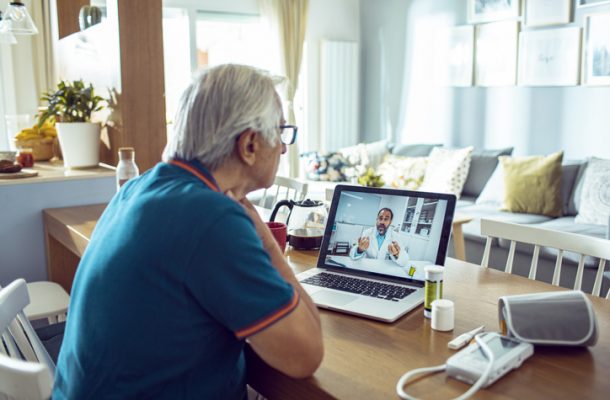Patients embraced telehealth during COVID-19

The expansion of telehealth-supported access to health care during the COVID-19 pandemic was roundly embraced by general practice patients, according to new Flinders University research.
The study – “The experience of Australian general practice patients at high risk of poor health outcomes with telehealth during the COVID-19 pandemic: a qualitative study”, by Sara Javanparast, Leigh Roeger, Yuen Kwok and Richard Reed – has been published by BMC Family Practice (doi.org/10.1186/s12875-021-01408-w)
The study interviewed 30 patients from nine general practices in metropolitan Adelaide, who had been identified by their regular doctors as being at high risk of poor health outcomes as part of a larger study of general practice services.
The interviews were conducted between May and June 2020 during a period of considerable community concern about COVID-19.
Twenty-five out of the 30 patients in the study utilised (at least once) telehealth consultations. The telehealth consultations occurred by telephone as opposed to videoconferencing.
Telehealth consultations were viewed as a very important factor for patients being able to access general practice care according to participants in the study.
“We found telehealth facilitated the continuity of care and health care management by timely access to their GPs during the pandemic,” says researcher Dr Sara Javanparast from Flinders University’s College of Nursing and Health Sciences.
“Overall, we found high levels of satisfaction with telehealth general practice consultations, particularly for issues that didn’t need a physical examination” says Dr Javanparast. “Patients liked that it saved travel time and its convenience.”
Participants in the study emphasized the importance of having a good existing relationship with their regular doctor for telehealth consultations to be effective. The most common reasons for telehealth consultations were for prescription renewal, discussing test results and for follow-ups.
Participants in the study very much valued the combination of telehealth and face-to-face services with their regular GPs, with the flexibility to choose between the modes. The research participants also identified challenges with using telehealth services, including difficulties in expressing themselves and accessing physical exams.
“The expansion of telehealth supported access to general practice during the COVID-19 pandemic,” says Dr Javanparast.
“In the future, telehealth in Australia is likely to have a stronger place in primary healthcare policy and practice and an increased acceptance among patients.”
Open Forum is a policy discussion website produced by Global Access Partners – Australia’s Institute for Active Policy. We welcome contributions and invite you to submit a blog to the editor and follow us on Facebook, Linkedin and Mastadon.













